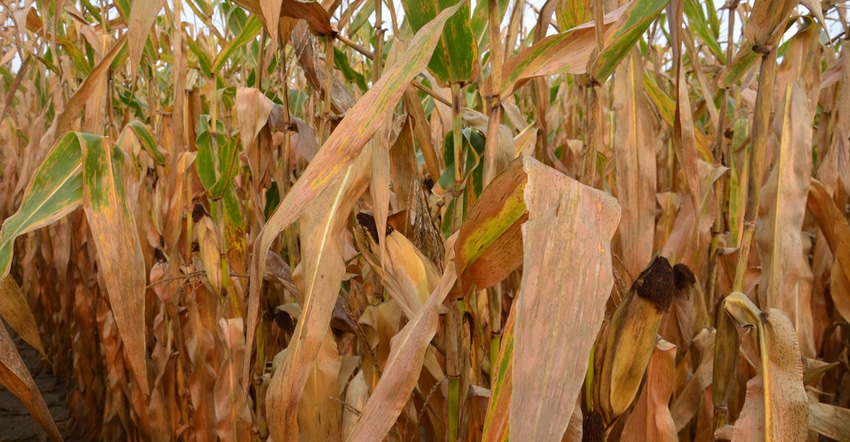October 3, 2017

The 2017 growing season was very abnormal. Some farmers were planting in April, but many growers couldn’t plant until the last week of May or even into June.
We’re experiencing weather extremes — from hot and dry in 2012 to a cool and dry late summer this year. Can we blame global warming for these extremes? Some people just blame Mother Nature! I think she’s becoming finicky in her old age.
Once corn reaches black layer, it indicates the end of dry matter accumulation in the kernels. Grain moisture varies from 32% to 35%, depending on the hybrid. What happens next, and how does corn dry down to harvestable moisture?
Weather conditions after grain fill is over have a major effect on how fast corn will dry in the field. On average, corn needs 20 to 25 growing degree day heat units to dry grain in the field by 1 percentage point. Lots of factors influence moisture at harvest.
Weather and drydown
Typically, corn drying in the field experiences a range of 0.5% to 0.8% moisture loss per day. That occurs mostly by evaporation. Even if hybrids have a similar relative maturity rating, some hybrids dry down faster than others.
Disease tolerance of hybrids may be different. Hybrids that have good stay-green power live longer and may have a higher yield potential, but they dry down more slowly.
Growers like hybrids with high yield potential, excellent disease tolerance, great standability, faster drydown and lower grain moisture at harvest. However, hybrids that live longer aren’t going to die earlier and dry fast.
Management decisions such as planting date, population density and use of foliar fungicides all affect rate of drydown and moisture at harvest. Corn breeders are always trying to find the best possible combination of all agronomic traits.
Best drydown traits
What are the agronomic characteristics of hybrids that affect rate of drydown? As corn matures, moisture is lost through the cob and ear shank, exposed ear tips, and husks.
Hybrids with thinner cobs tend to lose moisture faster. Upright ears tend to capture moisture in the husks and slow down the drying process. Droopy ears lose moisture faster than upright ears.
Grain with thicker skin and higher test weight dries slower. Chaffy or lightweight grain dries faster. Husk cover, number, thickness and tightness can affect rate of drydown. Cob thickness and kernel depth also influence how fast grain dries. Thickness of the skin of the kernel, called the pericarp, and ear angle to the stalk after maturity also affect drydown rate.
Since hybrids differ in these characteristics, they differ in their rates of drydown.
Nanda is president of Agronomic Crops Consultants LLC. Email him at [email protected], or call 317-910-9876.
About the Author(s)
You May Also Like






